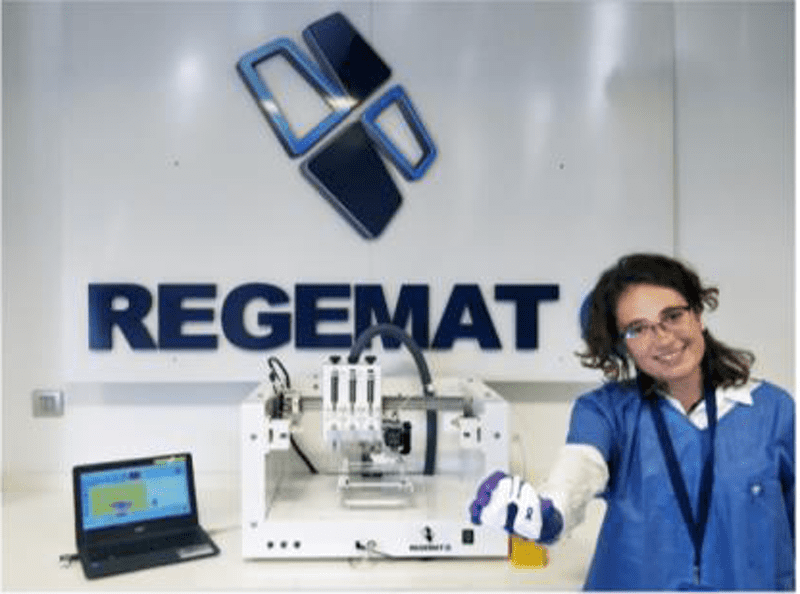[ihc-hide-content ihc_mb_type=”show” ihc_mb_who=”reg” ihc_mb_template=”3″ ]
[vc_row][vc_column][vc_column_text]Credits: www.3dprintingprogress.com
Bioprinting has emerged during the last years as a promising technology for creating living tissues to regenerate injuries and organs. Without any doubt it is a promising technology but, how far away scientists are from creating functional tissues and organs that can be implanted in human beings? Hype or reality? For more information see the IDTechEx report on 3D bioprinting.
GEMAT 3D, a technology based company based in Granada, Spain, is pioneering the development of bioprinting technologies. The Spanish company thinks that the advantages and potential of the technology are countless but still there is a lot of work to do and milestones to solve. It is a great time to get involved in this area as a researcher, and the number is increasing during the last year as well as the results and solutions.
REGEMAT 3D’s founder and CEO, José Manuel Baena, also founded BRECA Health Care in 2011, one of the first companies worldwide to implant a 3D printed implant, sees a lot of opportunities in the combination of 3D printed custom made synthetic medical devices and bioprinted structures to regenerate an injury.
“In the past if you wanted to do a reconstruction using biomaterials that biodegrade, you were restricted by the geometry and performance of sized medical devices. Now with 3D printing you can offer a customized solution combining a synthetic medical device with a biodegradable bioprinted one and even autologous cells of the patient to enhance the regeneration. Even if you could create in the lab a functional tissue, the integration with the surrounding tissues is not going to occur instantly. A custom made synthetic medical device will help to hold the structure and promote the integration of the bioprinted living tissue. There is a lot of opportunities and applications of bioprinting in the short term, even without the printing of living cells” Baena said.
REGEMAT 3D platform for bioprinting, consisting in hardware, an electronic control unit, and software is customized to every application as any new biomaterial and tissue needs its own device.
“There are another bioprinting companies that are selling this kind of machines “in batch” saying that with one system you can print many different tissues. This is not true. Also bioprinting as 3D printing is a wide range of technologies not just one. Researchers want to innovate, they want to create unique things, in accordance they need and unique system. A bioprinter is not a microwave.” Baena said.
The company based in Granada, Spain was founded in 2015 to transfer to the society the results of a project developed by the founder Jose Manuel Baena and Professor Marchal from 2011-2013 focused on cartilage cells. Now the company has systems in more than 20 countries and is steadily expanding.
“We focus on quality, not on quantity. We get involved in the research project with our users. For us it is not about to sell as many bioprinters as we can, is about to get results that help us to bring from lab to bed as many as innovative therapies as we can. There are still many milestones to overcome in bioprinting to create functional tissues, Don´t be fooled by the current hype. We are working on that. We were already successful in bringing 3D printed implants and prosthesis with BRECA Health Care to the clinical application and the results are incredible. It is a matter of time and effort.” Baena said.
[/vc_column_text][/vc_column][/vc_row]
[/ihc-hide-content]


